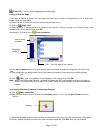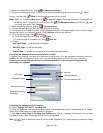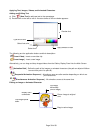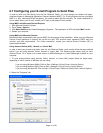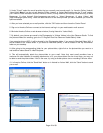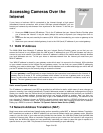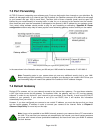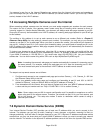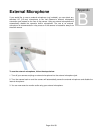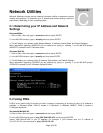
Page 43 of 69
Accessing Cameras Over the
Internet
If your home or business LAN is connected to the Internet through a high speed
(broadband) Internet connection, with at least 128 kbps upload bandwidth, you can
access your cameras by web browser from anywhere on the Internet. To do this you
need to:
1. Know your WAN (Internet) IP address. This is the IP address that your Internet Service Provider gives
you to access the Internet. It may be static (always the same) or dynamic (can change from time to
time).
2. Make sure the two ports used by the camera (80 & 1600) are forwarded by your router or gateway to the
camera.
3. Make sure your camera’s default gateway is set to the LAN (local) IP address of your router/gateway.
7.1 WAN IP Address
The WAN (Wide Area Network) IP address that your Internet Service Provider grants you so that you can
access the Internet is very different from the LAN or local IP address that your PCs and cameras are using to
connect to your local network. Your WAN or Internet IP address is visible to the outside world (Internet) whereas
your local addresses are not. To find your home or business network from the Internet you must know your
WAN IP address.
Your WAN IP address is stored by your gateway router which uses it to connect to the Internet. All the devices
on your network connect to the Internet via your gateway router. You can find your current WAN IP address by
checking your router’s status page. There are also various websites such as www.whatismyip.com which will tell
you the IP address that you are currently using to access the Internet.
Static versus Dynamic IP address
The IP address (or addresses) your ISP has provided you will either be static, which means it never changes, or
dynamic, meaning it can change periodically. Dynamic addresses present an additional challenge when trying to
locate your network from the Internet since your address may have changed since the last time you checked it.
How often your dynamic address changes varies from one service provider to another. Also, any time you
reboot your cable or DSL modem, your are likely to get a new address when reconnecting. The solution to the
ever changing IP address is known as DDNS or dynamic domain name service. A DDNS will allow you to find
your network by a domain name, such as mynetcam.no-ip.com, rather than needing to know the IP address.
Setting up a DDNS is covered in Section 7.6 Dynamic Domain Name Service (DDNS).
7.2 Network Address Translation (NAT)
Most home routers and business firewalls today perform something called NAT or Network Address Translation.
NAT translates your external or WAN IP address into an internal address inside your gateway router. What this
means is, you can think of your router as being divided into two halves, the LAN side (inside) and the WAN side
(outside or Internet side). When a connection request arrives at your router from the Internet, it will not get any
farther than the WAN side unless you have specifically instructed your router to pass this type of request to a
specific device on your LAN. This process is know as port forwarding or port redirecting.
Chapter
7
A
word about terminology
The term gateway is used generically to mean the device that connects a local network to the Internet. A
gateway may be a router, a PC running software which allows it to act as a gateway such as a proxy
server, or some other device
. Most home networks use a NAT (Network Address Translation) router as a
gateway. The term gateway router refers to such a device.





